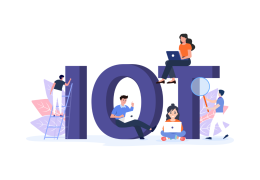The telecommunications industry is witnessing an unprecedented evolution, with the advent of 5G and the anticipated development of 6G technology. These advancements in 5G and 6G are set to redefine connectivity, shaping the future of communication, business, and everyday life. In this article, we will explore the impact of 5G, the potential of 6G, and how 5G and 6G technologies are paving the way for a smarter, more connected world.
Understanding 5G Technology
5G, or the fifth generation of mobile network technology, is the latest leap forward in telecommunications. It offers significantly higher speeds, lower latency, and greater capacity compared to its predecessor, 4G LTE. With download speeds up to 10 Gbps and latency as low as 1 millisecond, 5G opens the door to new possibilities in various industries.

The key features of 5G include ultra-fast speeds, low latency, and massive device connectivity, paving the way for smarter communication and innovation.
Key Features of 5G
- Ultra-Fast Speed
- 5G provides speeds that are up to 100 times faster than 4G, enabling seamless streaming, rapid downloads, and real-time data transmission.
- Low Latency
- With latency reduced to mere milliseconds, 5G ensures instantaneous communication, which is critical for applications like autonomous vehicles and remote surgeries.
- Massive Device Connectivity
- 5G supports the connection of billions of devices simultaneously, making it ideal for the Internet of Things (IoT) ecosystem.
- Enhanced Network Reliability
- The network’s improved reliability and stability ensure consistent performance, even in densely populated areas.
Applications of 5G
Healthcare
- 5G enables telemedicine, remote surgeries, and real-time health monitoring, revolutionizing patient care and medical procedures.
Automotive Industry
- Autonomous vehicles rely on 5G for real-time communication with sensors, traffic signals, and other vehicles, ensuring safe and efficient transportation.
Smart Cities
- With 5G, cities can implement smart infrastructure, including intelligent traffic management, energy-efficient buildings, and enhanced public safety systems.
Entertainment and Gaming
- 5G provides immersive experiences through augmented reality (AR) and virtual reality (VR), taking gaming and live-streaming to new heights.
The Emergence of 6G
While 5G is still in its rollout phase globally, researchers and technology leaders have already begun conceptualizing 6G, the sixth generation of mobile network technology. 6G is expected to build upon 5G’s capabilities, introducing even more revolutionary features.
Expected Features of 6G
- Terabit Speeds
- 6G is projected to achieve speeds up to 1 Tbps, making data transmission nearly instantaneous.
- Ultra-Low Latency
- Latency in 6G could drop to microseconds, enabling real-time communication for advanced applications.
- AI-Driven Networks
- Artificial Intelligence (AI) will play a pivotal role in optimizing 6G networks, enabling smarter resource allocation and predictive maintenance.
- Enhanced Spectrum Efficiency
- 6G will utilize advanced spectrum-sharing techniques to accommodate the growing demand for data.
Potential Applications of 6G
- Holographic Communication
- 6G could enable lifelike holographic video calls, transforming the way people communicate and collaborate remotely.
- Advanced IoT
- With 6G, IoT will reach its full potential, connecting trillions of devices with unparalleled efficiency.
- Brain-Computer Interfaces
- 6G might facilitate direct communication between human brains and computers, revolutionizing fields like neuroscience and prosthetics.
Challenges and Opportunities

6G promises revolutionary applications like holographic communication, advanced IoT, and brain-computer interfaces, transforming how we interact with technology.
Challenges in Implementing 5G and 6G
- Infrastructure Development
- Building the infrastructure for 5G and eventually 6G requires significant investment and time.
- Spectrum Availability
- Limited spectrum resources pose a challenge for accommodating the vast data traffic these technologies generate.
- Security Concerns
- As connectivity increases, so do the risks of cyberattacks and data breaches, necessitating robust security measures.
- Energy Consumption
- The high power demands of 5G and 6G networks call for innovative energy-efficient solutions to minimize environmental impact.
Opportunities for Growth
- Economic Impact
- The global rollout of 5G and the eventual deployment of 6G are expected to boost economies by creating jobs and driving innovation.
- Technological Advancements
- These technologies will accelerate advancements in AI, machine learning, and big data analytics.
- Enhanced Quality of Life
- From improved healthcare to smarter cities, 5G and 6G promise to enhance the quality of life across the globe.
The Future of Connectivity
As 5G continues to expand and 6G development gains momentum, the future of connectivity looks incredibly promising. These technologies will not only transform industries but also redefine how people interact with the digital world. From autonomous vehicles to intelligent healthcare systems, the possibilities are limitless.
In conclusion, the transition from 5G to 6G represents a significant leap forward in the evolution of communication technology. While challenges remain, the potential benefits far outweigh the hurdles. As we move toward a fully connected world, embracing 5G and 6G technologies will be crucial for driving innovation and improving lives.
The advancements in 5G and 6G are revolutionizing connectivity, offering unparalleled speed, reliability, and opportunities. By integrating 5G and 6G into our lives, we are stepping into a future that promises enhanced communication and limitless possibilities for technological growth.
You can read:






